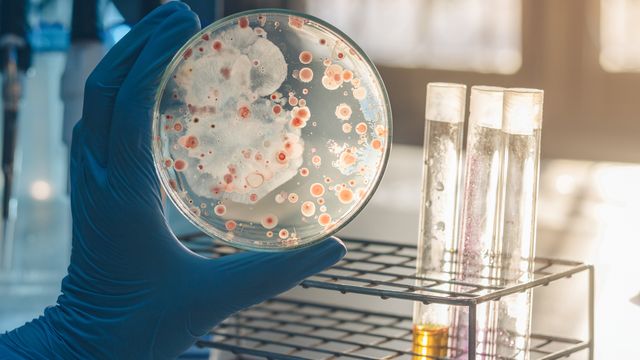Bioburden Culture Testing in Medical Device Manufacturing
In medical device manufacturing, ensuring product sterility and safety is paramount. Bioburden culture testing plays a critical role by quantifying the microbial load present on or within a medical device before it reaches the market.
The significance of bioburden testing cannot be overstated. It helps manufacturers identify potential contamination risks early in the production process, thereby preventing the release of potentially harmful products into healthcare settings. This test is particularly important for devices that come into direct contact with patients, such as catheters, surgical instruments, and implantable devices.
Bioburden culture testing involves inoculating a sample from the medical device onto selective media to allow for microbial growth. The resulting colonies are then counted and identified. This process not only helps in establishing baseline bioburden levels but also aids in evaluating the effectiveness of sterilization methods used during manufacturing.
The outcome of this test is crucial for regulatory compliance, ensuring that products meet stringent standards set by organizations like the FDA and international bodies such as ISO. For instance, ISO 11737-2 specifies requirements for determining bioburden levels on medical devices.
The importance of this test extends beyond mere compliance; it contributes to patient safety by minimizing the risk of infections associated with contaminated medical devices. By ensuring that each device is free from excessive microbial contamination, healthcare providers can offer safer and more reliable products.
Understanding bioburden culture testing also involves recognizing its role in quality assurance. Manufacturers use this test as part of their overall Quality Management System (QMS) to monitor the effectiveness of sterilization processes and ensure consistent product quality.
Why It Matters
The significance of bioburden culture testing cannot be overstated in the context of medical device manufacturing. The primary reason for conducting this test is to ensure that medical devices are free from excessive microbial contamination, which could lead to infections if introduced into a clinical setting.
- Maintains regulatory compliance
- Ensures product safety and quality
- Identifies potential sterilization process deficiencies
- Reduces the risk of patient infections
The FDA, EU-MDR, and other international standards mandate that medical device manufacturers conduct bioburden testing to demonstrate that their products are safe for use in healthcare settings. Failure to comply can result in product recalls, fines, and reputational damage.
Additionally, bioburden culture testing provides valuable data that helps manufacturers optimize sterilization processes. By identifying the microbial load on a device, companies can fine-tune their sterilization protocols to achieve consistent results across different batches or production runs. This not only enhances product quality but also ensures consistent performance over time.
The test is particularly crucial for high-risk devices such as implantable medical devices and those used in invasive procedures. These devices have a higher potential for causing infections if contaminated, making bioburden testing an essential step in their production process.
Scope and Methodology
| Aspect | Description |
|---|---|
| Sample Collection | The process involves collecting samples from various parts of the medical device, including surfaces and internal components. |
| Media Selection | Selective media suitable for culturing microorganisms relevant to the medical device category is used. |
| Growth Conditions | The samples are incubated under controlled conditions to promote microbial growth. |
| Counting and Identification | Colonies are counted, and species identification is performed using standard microbiological techniques. |
| Step | Description |
|---|---|
| Preparation of Samples | The medical device is cleaned and prepared according to standard operating procedures. |
| Inoculation | Samples are inoculated onto selective media plates to encourage microbial growth. |
| Culturing | Media is incubated under appropriate conditions for the expected growth of microorganisms. |
| Data Analysis | The number and type of colonies are recorded, and results are compared against acceptance criteria. |
Why Choose This Test
- Meets regulatory requirements for medical device manufacturing
- Ensures product safety and quality
- Identifies potential sterilization process deficiencies
- Reduces the risk of patient infections
- Provides valuable data for optimizing sterilization processes
- Maintains consistency in production across batches
- Supports compliance with international standards like ISO 11737-2
- Aids in quality assurance and control within the manufacturing process
The bioburden culture test is an essential component of a comprehensive Quality Management System (QMS). By incorporating this test into their production processes, manufacturers can ensure that they are producing safe and effective medical devices.
Moreover, this test helps in identifying any potential issues with sterilization methods. If the bioburden levels do not meet the specified criteria, it indicates a need to re-examine and refine the sterilization process. This continuous improvement approach ensures that every batch of medical devices meets the highest standards of safety and efficacy.





